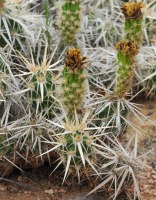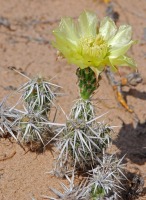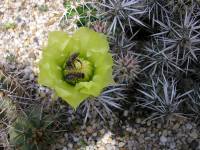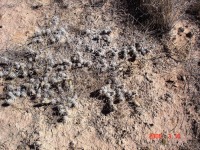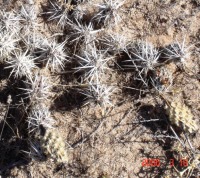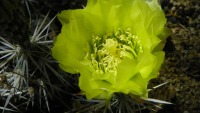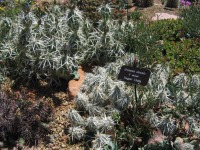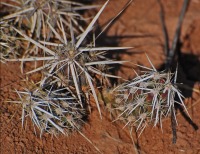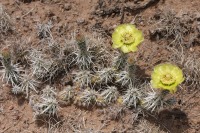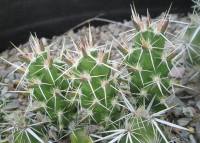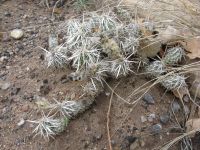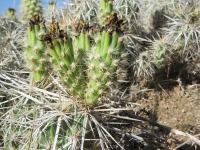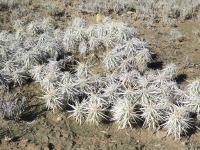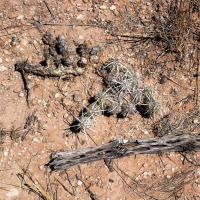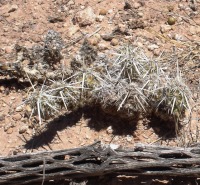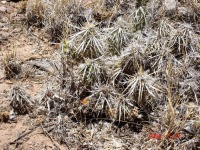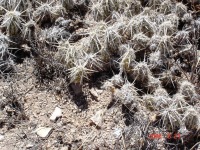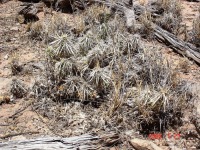Engelmann. 1848. Memoir of a Tour to Northern Mexico: Connected with Col. Doniphan’s Expedition in 1846 and 1847 95.
Neotype; Herbarium specimen; Herbarium specimen; Herbarium specimen; Herbarium specimen; Herbarium specimen; Herbarium specimen; Herbarium specimen; Herbarium specimen
Original species description
Flora of North America treatment
What is Grusonia clavata?
Grusonia clavata is a dog cholla restricted to NM in the United States according to the Flora of North America online, but it may occur in far eastern AZ near Lupton. It is plentiful in northern Mexico.
Details
G. clavata forms mats of club-shaped cladodes and spread to over 1 m across. Cladodes are short-clavate and strongly narrowed at the base: 2.5-5(8) x 1.5-3 cm. Oval areoles about 3 mm in diameter form on prominent tubercles that are 5-10(16) mm long, and 4-6 times longer than wide. There are 7-15 spines per areole, primarily in the distal areoles. Some (3-5) major abaxial spines are deflexed and flattened; the longest central spine is dagger-like and broadly tapered (12-35 × 1.5+ mm basally). There are 1-3 ascending adaxial major spines. Spines are white, dull-white, or yellow to tan, and angular-flattened to subterete. Glochids are typically pale yellow or yellowish-white and up to about 4 mm long. Due to dust, the plants are often dirty white in situ. From late summer to mid-spring the plants often appear dead because they are dirty and dehydrated. In spring, the stems turn green and the beautiful canary-yellow flowers appear. The roots are not tuberous and G. clavata is diploid.
